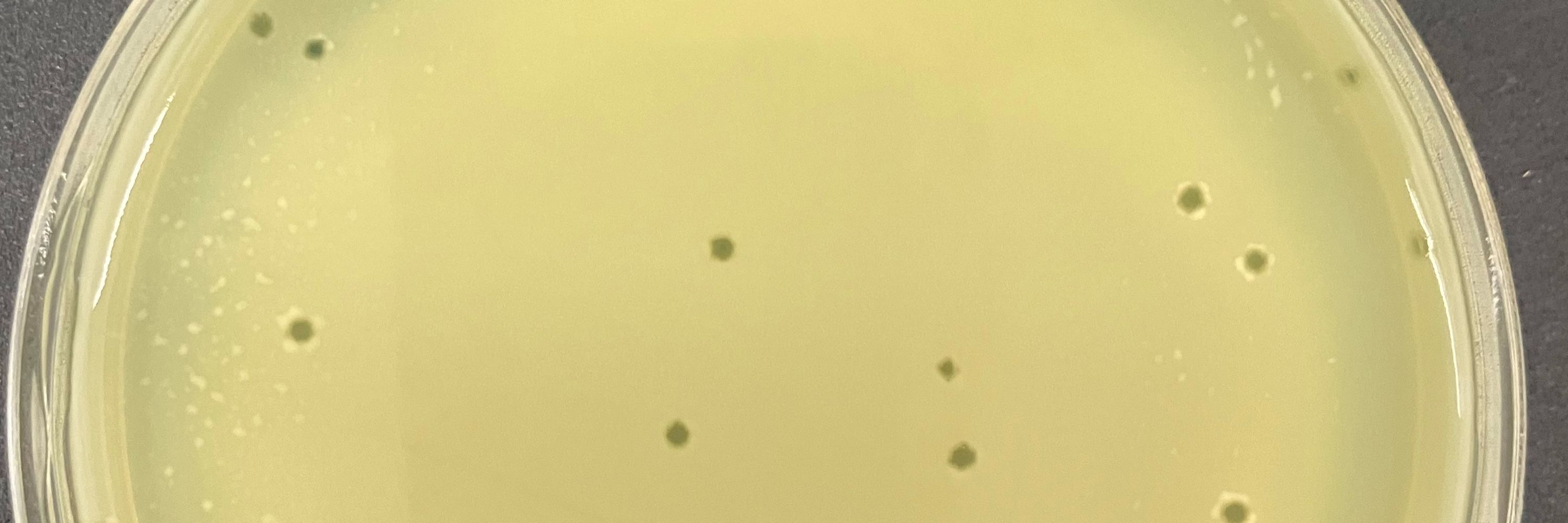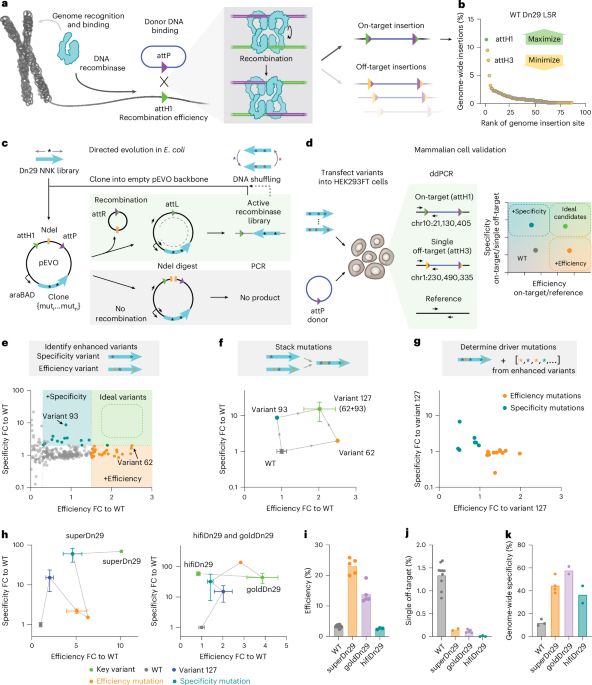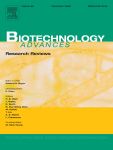
Emmanuele Severi
@emmseveri.bsky.social
Research Fellow at Northumbria University: phage, synthetic biology, sialic acid, transport proteins. He/him.
Pinned

VOM-UK Conferences - NU-OMICS
Viruses of Microbes UK (VoM-UK) Conference The Virus of Microbes UK (VoM-UK) Conference is hosted by Microbiome Excellence Peak of Excellence at Northumbria University. This two-day conference takes place annually at the end of January/beginning of February and is a chance for researchers to gather and share their knowledge. The VoM-UK conference is designed to […]
hosting.northumbria.ac.uk
hosting.northumbria.ac.uk/nu-omics/vom...
#phagesky #phage #microsky
Come and join us for Viruses of Microbes UK 2026 at @northumbriauni.bsky.social ! Fantastic chance for ECRs to showcase their work 🙂
#phagesky #phage #microsky
Come and join us for Viruses of Microbes UK 2026 at @northumbriauni.bsky.social ! Fantastic chance for ECRs to showcase their work 🙂
Reposted by Emmanuele Severi
So happy to share this! Bacteriocins were first discovered over 100 years ago, but what do they actually do? We look at >1000 bacteriocin plasmids and find links to virulence and antimicrobial resistance, and frequent bacteriocin sharing in Enterobacteriaceae.
www.nature.com/articles/s41...
www.nature.com/articles/s41...

Bacterial warfare is associated with virulence and antimicrobial resistance - Nature Communications
Bacteria employ a range of competition systems that deliver toxins to inhibit competing strains. This study shows that these systems are particularly important for the ecology of virulent and antibiot...
www.nature.com
November 9, 2025 at 4:51 PM
Reposted by Emmanuele Severi
Occurrence of type VI secretion system effector genes in longitudinal isolates of P. aeruginosa from people with cystic fibrosis
Microbial Genomics by Antonia Habich from Daniel Unterweger
with @asgriffin.bsky.social @sandrabandersen.bsky.social
www.microbiologyresearch.org/content/jour...
Microbial Genomics by Antonia Habich from Daniel Unterweger
with @asgriffin.bsky.social @sandrabandersen.bsky.social
www.microbiologyresearch.org/content/jour...

Occurrence of type VI secretion system effector genes in longitudinal isolates of P. aeruginosa from people with cystic fibrosis
Pseudomonas aeruginosa uses multiple type VI secretion systems (T6SSs) to manipulate eukaryotic cells, kill competing microbes and take up nutrients. Bacterial strains are known to differ in their T6S...
www.microbiologyresearch.org
November 8, 2025 at 11:43 AM
Occurrence of type VI secretion system effector genes in longitudinal isolates of P. aeruginosa from people with cystic fibrosis
Microbial Genomics by Antonia Habich from Daniel Unterweger
with @asgriffin.bsky.social @sandrabandersen.bsky.social
www.microbiologyresearch.org/content/jour...
Microbial Genomics by Antonia Habich from Daniel Unterweger
with @asgriffin.bsky.social @sandrabandersen.bsky.social
www.microbiologyresearch.org/content/jour...
Reposted by Emmanuele Severi
Endolysin of Aeromonas bacteriophage 3: a novel Ca(2+)-activated peptidoglycan hydrolase giving insight into the regulation of phage lysis in Gram-negative bacteria.
DOI: 10.1016/j.ijbiomac.2025.146934
https://pubmed.ncbi.nlm.nih.gov/40825433/
DOI: 10.1016/j.ijbiomac.2025.146934
https://pubmed.ncbi.nlm.nih.gov/40825433/

Endolysin of Aeromonas bacteriophage 3: a novel Ca2+-activated peptidoglycan hydrolase giving insight into the regulation of phage lysis in Gram-negative bacteria - PubMed
A search for bacteriophage proteins with an EF-like calcium-binding loop, first discovered in the phage T5 endolysin (EndoT5), revealed a group of 71 peptidases of the M15_C subfamily. All the sequences found belonged to the phages infecting Gram-negative bacteria (Escherichia, Salmonella, Klebsiell …
pubmed.ncbi.nlm.nih.gov
November 7, 2025 at 7:30 PM
Endolysin of Aeromonas bacteriophage 3: a novel Ca(2+)-activated peptidoglycan hydrolase giving insight into the regulation of phage lysis in Gram-negative bacteria.
DOI: 10.1016/j.ijbiomac.2025.146934
https://pubmed.ncbi.nlm.nih.gov/40825433/
DOI: 10.1016/j.ijbiomac.2025.146934
https://pubmed.ncbi.nlm.nih.gov/40825433/
Reposted by Emmanuele Severi
Strain displacement in microbiomes via ecological competition
Cool @natmicrobiol.nature.com publication by @erikbakkeren.bsky.social
@vit-pi.bsky.social @meganleeny.bsky.social @microscape.bsky.social & Kevin Foster
www.nature.com/articles/s41...
Cool @natmicrobiol.nature.com publication by @erikbakkeren.bsky.social
@vit-pi.bsky.social @meganleeny.bsky.social @microscape.bsky.social & Kevin Foster
www.nature.com/articles/s41...

Strain displacement in microbiomes via ecological competition - Nature Microbiology
Mathematical modelling and experimental tests reveal principles that govern displacement of a resident strain by an invader in microbial communities.
www.nature.com
November 7, 2025 at 2:19 PM
Strain displacement in microbiomes via ecological competition
Cool @natmicrobiol.nature.com publication by @erikbakkeren.bsky.social
@vit-pi.bsky.social @meganleeny.bsky.social @microscape.bsky.social & Kevin Foster
www.nature.com/articles/s41...
Cool @natmicrobiol.nature.com publication by @erikbakkeren.bsky.social
@vit-pi.bsky.social @meganleeny.bsky.social @microscape.bsky.social & Kevin Foster
www.nature.com/articles/s41...
Reposted by Emmanuele Severi
Intracellular Salmonella hijacks the mitochondrial citrate carrier to evade host oxidative defenses
www.nature.com/articles/s41...
www.nature.com/articles/s41...

Intracellular Salmonella hijacks the mitochondrial citrate carrier to evade host oxidative defenses - Nature Communications
In this study, the authors show that Salmonella enterica serovar Typhimurium co-opts the host mitochondrial citrate carrier (CIC) to regulate the redox state of its vacuole, facilitating intracellular...
www.nature.com
November 7, 2025 at 4:41 PM
As @giusym1990.bsky.social puts it, bacteria know when there’s a deadline!!!
The most productive week: given a strain that’s intrinsically resistant to the antibiotic I must use; given a different one that doesn’t grow at all; synthetic gene has a mutation; had to test 3 different polymerases for the PCR to work.
Is it wine o’clock yet?!?
Is it wine o’clock yet?!?
November 7, 2025 at 4:56 PM
As @giusym1990.bsky.social puts it, bacteria know when there’s a deadline!!!
The most productive week: given a strain that’s intrinsically resistant to the antibiotic I must use; given a different one that doesn’t grow at all; synthetic gene has a mutation; had to test 3 different polymerases for the PCR to work.
Is it wine o’clock yet?!?
Is it wine o’clock yet?!?
November 7, 2025 at 4:55 PM
The most productive week: given a strain that’s intrinsically resistant to the antibiotic I must use; given a different one that doesn’t grow at all; synthetic gene has a mutation; had to test 3 different polymerases for the PCR to work.
Is it wine o’clock yet?!?
Is it wine o’clock yet?!?
Deadline for abstracts: 12th Dec 2025.
Deadline for registration: 9th Jan 2026.
#microsky #phagesky #phage
Deadline for registration: 9th Jan 2026.
#microsky #phagesky #phage
hosting.northumbria.ac.uk/nu-omics/vom...
#phagesky #phage #microsky
Come and join us for Viruses of Microbes UK 2026 at @northumbriauni.bsky.social ! Fantastic chance for ECRs to showcase their work 🙂
#phagesky #phage #microsky
Come and join us for Viruses of Microbes UK 2026 at @northumbriauni.bsky.social ! Fantastic chance for ECRs to showcase their work 🙂

VOM-UK Conferences - NU-OMICS
Viruses of Microbes UK (VoM-UK) Conference The Virus of Microbes UK (VoM-UK) Conference is hosted by Microbiome Excellence Peak of Excellence at Northumbria University. This two-day conference takes place annually at the end of January/beginning of February and is a chance for researchers to gather and share their knowledge. The VoM-UK conference is designed to […]
hosting.northumbria.ac.uk
November 7, 2025 at 8:18 AM
Reposted by Emmanuele Severi
hosting.northumbria.ac.uk/nu-omics/vom...
#phagesky #phage #microsky
Come and join us for Viruses of Microbes UK 2026 at @northumbriauni.bsky.social ! Fantastic chance for ECRs to showcase their work 🙂
#phagesky #phage #microsky
Come and join us for Viruses of Microbes UK 2026 at @northumbriauni.bsky.social ! Fantastic chance for ECRs to showcase their work 🙂

VOM-UK Conferences - NU-OMICS
Viruses of Microbes UK (VoM-UK) Conference The Virus of Microbes UK (VoM-UK) Conference is hosted by Microbiome Excellence Peak of Excellence at Northumbria University. This two-day conference takes place annually at the end of January/beginning of February and is a chance for researchers to gather and share their knowledge. The VoM-UK conference is designed to […]
hosting.northumbria.ac.uk
October 9, 2025 at 9:21 AM
hosting.northumbria.ac.uk/nu-omics/vom...
#phagesky #phage #microsky
Come and join us for Viruses of Microbes UK 2026 at @northumbriauni.bsky.social ! Fantastic chance for ECRs to showcase their work 🙂
#phagesky #phage #microsky
Come and join us for Viruses of Microbes UK 2026 at @northumbriauni.bsky.social ! Fantastic chance for ECRs to showcase their work 🙂
#synbio significant technological development of large Ser recombinases.
I’m sure @factor50.bsky.social would love to have a look
www.nature.com/articles/s41...
I’m sure @factor50.bsky.social would love to have a look
www.nature.com/articles/s41...

Site-specific DNA insertion into the human genome with engineered recombinases - Nature Biotechnology
Engineered DNA recombinases efficiently and specifically insert genetic cargos without the use of landing pads.
www.nature.com
November 7, 2025 at 8:16 AM
#synbio significant technological development of large Ser recombinases.
I’m sure @factor50.bsky.social would love to have a look
www.nature.com/articles/s41...
I’m sure @factor50.bsky.social would love to have a look
www.nature.com/articles/s41...
Reposted by Emmanuele Severi
Looks awesome! Junior scientists -- apply!
The full list of workshop instructors is available here.
Registration closes November 15 🥳🥳
bsky.app/profile/jlst...
Registration closes November 15 🥳🥳
bsky.app/profile/jlst...
November 7, 2025 at 2:52 AM
Looks awesome! Junior scientists -- apply!
Reposted by Emmanuele Severi
🚨New preprint out!
We present a foundational genomic resource of human gut microbiome viruses. It delivers high-quality, deeply curated data spanning taxonomy, predicted hosts, structures, and functions, providing a reference for gut virome research. (1/8)
www.biorxiv.org/content/10.1...
We present a foundational genomic resource of human gut microbiome viruses. It delivers high-quality, deeply curated data spanning taxonomy, predicted hosts, structures, and functions, providing a reference for gut virome research. (1/8)
www.biorxiv.org/content/10.1...

November 6, 2025 at 5:26 PM
🚨New preprint out!
We present a foundational genomic resource of human gut microbiome viruses. It delivers high-quality, deeply curated data spanning taxonomy, predicted hosts, structures, and functions, providing a reference for gut virome research. (1/8)
www.biorxiv.org/content/10.1...
We present a foundational genomic resource of human gut microbiome viruses. It delivers high-quality, deeply curated data spanning taxonomy, predicted hosts, structures, and functions, providing a reference for gut virome research. (1/8)
www.biorxiv.org/content/10.1...
Reposted by Emmanuele Severi
Amazing paper, especially love this figure of what differentiates broad host range phages: especially Diversity Generating Retroelements and multiple methyltransferases

November 7, 2025 at 3:01 AM
Amazing paper, especially love this figure of what differentiates broad host range phages: especially Diversity Generating Retroelements and multiple methyltransferases
Reposted by Emmanuele Severi
New paper: www.sciencedirect.com/science/arti...
Klebs can evolve resistance to Colistin through mgrB mutation or by acquiring the mcr-1 gene. Both routes have similar fitness costs against a bacterial competitor, but mgrB mutations are associated with enhanced virulence.
Klebs can evolve resistance to Colistin through mgrB mutation or by acquiring the mcr-1 gene. Both routes have similar fitness costs against a bacterial competitor, but mgrB mutations are associated with enhanced virulence.

mgrB inactivation confers enhanced pathogenicity and immune evasion over mcr-1 expression in colistin-resistant Klebsiella pneumoniae
Colistin is one of the last treatment options against human infections caused by multi-drug resistant Klebsiella pneumoniae. Colistin resistant K. pne…
www.sciencedirect.com
November 6, 2025 at 12:13 PM
New paper: www.sciencedirect.com/science/arti...
Klebs can evolve resistance to Colistin through mgrB mutation or by acquiring the mcr-1 gene. Both routes have similar fitness costs against a bacterial competitor, but mgrB mutations are associated with enhanced virulence.
Klebs can evolve resistance to Colistin through mgrB mutation or by acquiring the mcr-1 gene. Both routes have similar fitness costs against a bacterial competitor, but mgrB mutations are associated with enhanced virulence.
Reposted by Emmanuele Severi
Reposted by Emmanuele Severi
#ISMEJournal paper from Simon Heilbronner
Competitive fitness of Staphylococcus aureus against nasal commensals depends on biotin biosynthesis and acquisition
academic.oup.com/ismej/advanc...
Competitive fitness of Staphylococcus aureus against nasal commensals depends on biotin biosynthesis and acquisition
academic.oup.com/ismej/advanc...

Competitive fitness of Staphylococcus aureus against nasal commensals depends on biotin biosynthesis and acquisition
Abstract. The human nasal microbiome can serve as a reservoir for pathogens. In particular, the opportunistic pathogen Staphylococcus aureus can be a membe
academic.oup.com
November 6, 2025 at 8:38 AM
#ISMEJournal paper from Simon Heilbronner
Competitive fitness of Staphylococcus aureus against nasal commensals depends on biotin biosynthesis and acquisition
academic.oup.com/ismej/advanc...
Competitive fitness of Staphylococcus aureus against nasal commensals depends on biotin biosynthesis and acquisition
academic.oup.com/ismej/advanc...
#microsky finally a TRAP transporter that is *not* the Neu5Ac-transporting SiaPQM ;-)
www.cell.com/structure/fu...
www.cell.com/structure/fu...

Structural basis of isethionate transport by a TRAP transporter from a sulfate-reducing bacterium
Newton-Vesty et al. used a megabody fiducial to determine the cryo-EM structure of
an isethionate TRAP transporter, revealing the substrate and Na+-binding sites. Transport
is dependent on Na+ and the...
www.cell.com
November 6, 2025 at 1:29 AM
#microsky finally a TRAP transporter that is *not* the Neu5Ac-transporting SiaPQM ;-)
www.cell.com/structure/fu...
www.cell.com/structure/fu...








